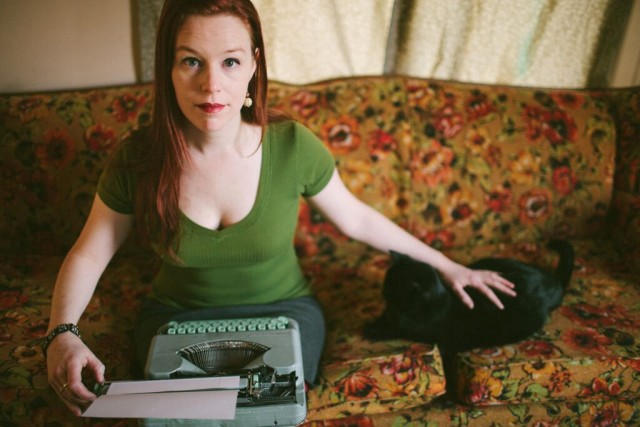Marian Call Creates a Kickstarter Formula to Keep You In the Black

Interested in Kickstarting a project? Time to get familiar with the fc/tf formula.
My friend Marian Call is minutes away from completing her second successful Kickstarter, to fund her new album “Standing Stones.” As of this writing, 1,083 backers have pledged $66,384 of her $25,000 goal. (Full disclosure: I am one of those backers.)
Call also published a 5,000-word analysis of how to run a successful Kickstarter, titled Kickstarter Math is Weird. Consider it mandatory reading for anyone planning to launch a Kickstarter — and I stress the word planning here, because, as Call notes, most of what will make your Kickstarter succeed or fail happens long before you ask the crowd for funding.
What are some factors that might determine a Kickstarter’s success? Call cites both the quantitative:
My budget is based on real numbers and quotes, not guesses, down to exact airfare and realistic food estimates. Don’t ever guess on your project budget — you probably don’t have to. A little research, a few phone calls, will save you a lot of trouble.
And the qualitative:
Your crowdfunding goal should be determined by the amount your crowdfunding community can cheerfully bear. No begging and pleading, no desperation or self-flagellation should enter into it — they want to see themselves climbing this mountain together in a spirit of fun and enthusiasm. Don’t set an amount higher than the spirit of the crowd can joyfully conquer. If you need more, you have to come up with the rest on your own.
Then Call goes deep into the math, sharing the spreadsheet she used to create her project and inviting other creators to copy and adjust it to their own needs.
A large portion of the spreadsheet builds towards what Call identifies as the fc/tf formula, or “fulfillment cost as percentage of total funding.” This is where a lot of people run into problems: they create Kickstarter rewards that cost so much to fulfill that they don’t have money left over to do their project.
Call notes that changing the fc/tf value by a few hundredths of a decimal can be enough to take a project from the black to the red. It’s an extremely tricky balance to find, because you want to provide rewards that backers want, but you also want to keep that fulfillment cost percentage as low as possible.
You also have very little control over the fc/tf value, once the project gets going. Let’s say you have one reward that costs a lot to fulfill (like mailing posters in tubes) and that’s the reward tier that everyone backs. Your fulfillment cost rises out of proportion to your total funding.
There are a variety of factors that can push your fulfillment cost up, from the number of international backers who support your project to the USPS’s decision to raise postage rates one week after your Kickstarter launches. Call’s advice? Plan for as many contingencies as possible.
Run scenarios where everyone backs a specific tier, especially a tier you don’t expect. If you have a reward that is expensive to fulfill (for me, $125) and everyone flocks to it, will you still have enough for the main project budget?
You have to be solvent if people hit your highest rewards harder than you expect, but also if NOBODY takes your top rewards. Run your scenario with almost everyone backing at $50 or less, and then with most backing at $50 or more.
Try to break your funding, until you are sure your funding always works no matter what the crowd does.
If you’re thinking about doing a Kickstarter and you’d like to try to break your funding, start with Call’s spreadsheet and begin putting in your own numbers.
And read her entire guide to Kickstarting. Then read it again, because there’s a lot of information there. If I had read and followed this guide before launching my own Kickstarter, I probably wouldn’t have gone $3,000 in the hole to complete my project.
Also: the guide works for Patreon too.
Photo credit: Grace Virginia Kari, used by permission
Support The Billfold
The Billfold continues to exist thanks to support from our readers. Help us continue to do our work by making a monthly pledge on Patreon or a one-time-only contribution through PayPal.
Comments